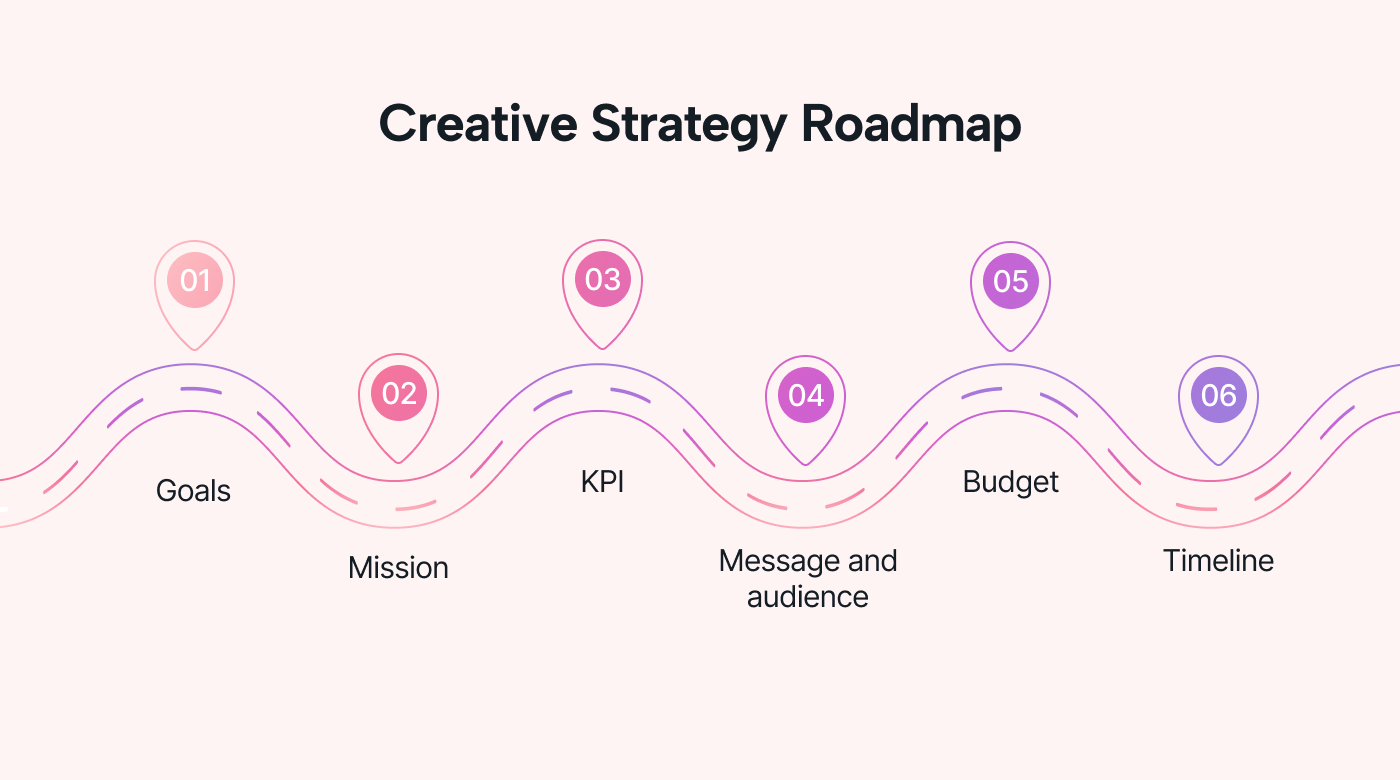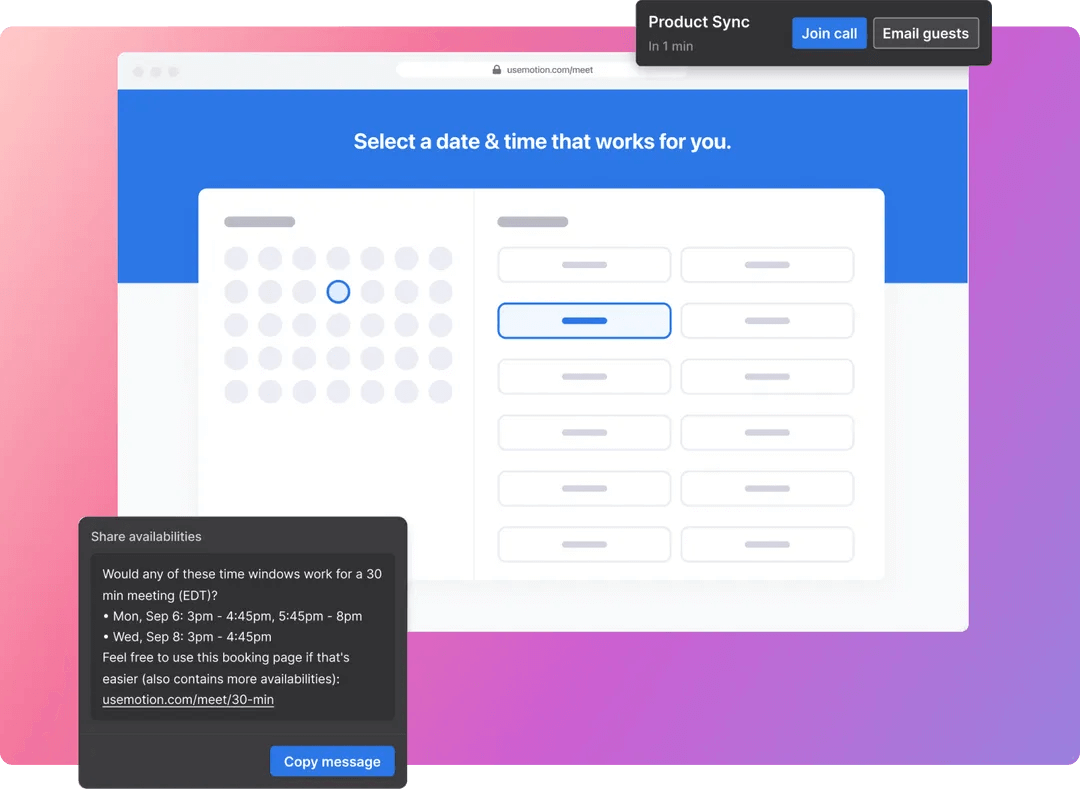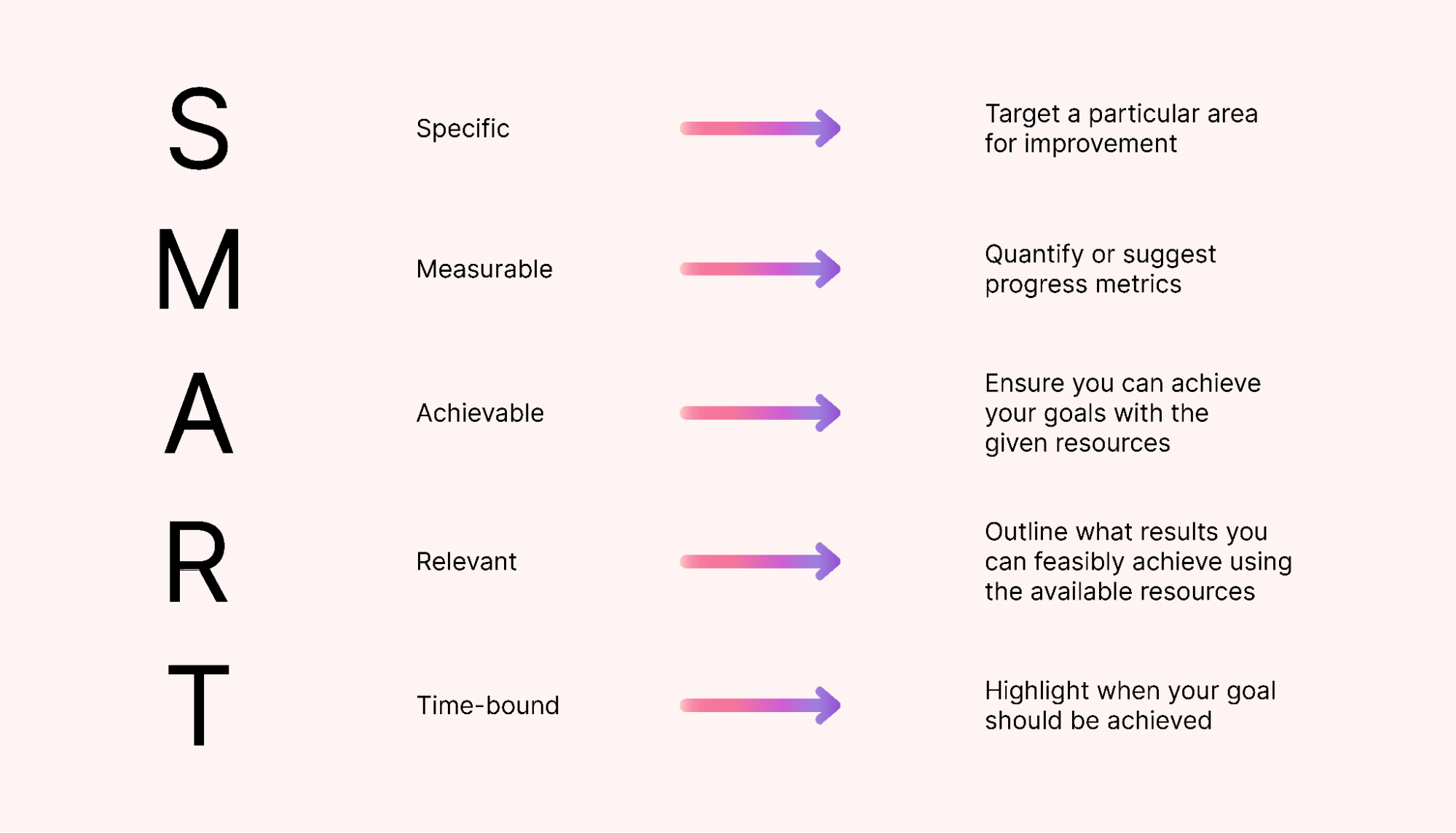Have an exciting new product to introduce to the market? That’s great!
However, making that product stand out among competitors can be a real challenge. So, if you don’t have a creative strategy for your project, you might not get very far.
Diving into a campaign without a strategy is like going on a road trip without Google Maps.
But you also need to bring your strategy to life. While a strategy gives you a roadmap to follow, it becomes predictable without creativity.
A creative strategy blends a structured plan with innovation to move your business forward with both purpose and pizzazz.
So how can you create your own creative strategy?
Read on to learn how to create an impactful, creative strategy in six steps.
What is a creative strategy?
A creative strategy is a plan that guides your business toward its goals and objectives. It acts as a bridge between your brand’s vision and its real-world impact.
Using creativity in your strategic process helps your business capture its target audience. This balanced approach not only drives growth but also ensures that your brand remains memorable and stands out from the competition.
Why does your business need a creative strategy?
As of 2023, there are more than 33 million small businesses in the US. So, how can you help yours stand out?
A creative strategy differentiates you from your competitors and provides a unique voice that resonates with your customers. Here’s how:
It sets clear directions
With a creative strategy, you know where you’re going and what the stops are along the way.
 |
As a result, you become not only more organized but also more successful — in fact, you’re 674% more likely to achieve your goals if you’re organized.
It helps build brand loyalty
A brand is more than a logo or tagline. It represents a unique identity that connects with your customers. A creative strategy ensures your brand message resonates deeply, compelling customers to return time and time again.
It’s this emotional connection that transforms the occasional buyer into a loyal brand advocate. And the power of brand loyalty shouldn’t be underestimated — it can be the difference between a one-time purchase and a lifelong customer relationship.
It helps you anticipate market changes
In today’s market, remaining static is simply not an option. A creative strategy allows your company to anticipate and adapt to market changes. Being proactive and not reactive can help you identify opportunities and threats early — giving you time to recalibrate and innovate.
6 steps to writing a winning creative strategy
So, how do you write a creative strategy that does everything we mentioned above? We’ve broken it down for you into six easy steps.
1. Define your goals
Every successful journey starts with a clear destination. So, before getting caught up in the details of your strategy, take a moment to outline what success looks like for your business or project. Is it increased sales, brand awareness, or customer loyalty?
Additionally, use the SMART framework. Set specific, measurable, achievable, relevant, and time-bound goals.
Tip: It’s good practice to revisit and refine your goals regularly, as that’ll help keep them aligned with the business’s or project’s evolving needs and challenges.
2. Draft your creative strategy statement
Your creative strategy statement should succinctly capture the essence of your company or project. Ask yourself: Why am I writing this strategy? Who is the intended audience? What unique value does it offer?
By addressing these core questions, you’ll be able to craft a purpose-driven statement that guides every decision and action moving forward.
Tip: Keep your statement short, sweet, and simple. It should be easily understood by anyone in your organization, from top management to new hires.
3. Choose KPIs
Success needs to be quantifiable. While you might think this is common knowledge, only 31% of marketing teams measure return on investment. Measuring success is important because it allows you to validate your efforts and adjust strategies in a timely manner.
Pick key performance indicators (KPIs) that’ll let you know whether you’re on track or need to pivot. For example, if you’re launching a new product, consider tracking sales conversion rates or customer feedback scores.
Tip: Make sure your chosen KPIs align with your overall business objectives. If your goal is to increase brand awareness, a KPI like “reach” or “impressions” might be more relevant than one like “sales conversions.” Always tie your metrics back to the bigger picture.
4. Determine your message and audience
Understanding your audience is key to delivering a consistent message that hits home. Research shows that 27% of consumers are most frustrated by inconsistent messaging on different channels, and another 27% are most frustrated by receiving irrelevant product messages.
Consistency in communication builds trust and a cohesive brand image. So, take the time to research, define, and understand your target audience. Their preferences, needs, and pain points should shape your message.
Tip: Conduct regular surveys or feedback sessions with your target audience. This will give you invaluable insights into what they truly value — so your message will always be relevant and impactful.
5. Set a budget
A great strategy respects its budget. Effective financial planning helps ensure that every dollar is used optimally to achieve your goals. Decide how much you’re going to invest and where those funds will go.
Answer the following questions before setting a budget:
- What kinds of deliverables will you produce?
- How much will you rely on paid ads vs. organic marketing?
- How much will paid services (such as running online ads, paying vendors, or buying new software) cost?
- How long will you need these services?
 |
Tip: Adjust your budget based on performance metrics and ROI so you can reallocate funds to your highest-performing strategies.
6. Create a timeline
Plot out when and how each phase of your strategy will unfold. A timeline gives everyone involved a clear picture of the project’s milestones, deliverables, and deadlines, helping to keep you and your team on schedule and aligned.
Tip: Use project management software like Motion to create a schedule for your projects. This makes it easier to adjust, collaborate, and monitor your progress throughout the strategy’s execution.
Creative strategy example
Let’s take a look at an example of a creative strategy for a startup brand so you can see how impactful infusing creativity into your strategy can be.
Brand: GreenSip, a budding startup, aims to introduce a new wave of healthy, organic beverages to a market dominated by sodas and other drinks. GreenSip is driven by the ethos of health, natural ingredients, and exceptional taste.
Objective: Increase brand awareness by 50% and boost sales by 30% over the next 6 months.
Creative strategy statement: Introduce GreenSip as a refreshing, go-to drink that offers a burst of health and flavor, catering to the on-the-go urban millennial.
Message: “Your Daily Bottle of Nature.” This slogan targets the urban audience, offering them a touch of nature in their fast-paced lives.
Target audience: Urban millennials aged 24–35 who are health-conscious and seeking quick, nutritious options.
Marketing campaigns:
- Instagram (for its visual appeal and millennial user base)
- Local health blogs
- Partnerships with local gyms
KPIs:
- 25% increase in Instagram followers
- 20% rise in website traffic from health blogs
- 10% conversion rate for promo codes offered in local gyms
Budget:
- $10,000 for Instagram ads
- $5,000 for health blog partnerships and promotions
- $3,000 for local gym partnerships
Timeline:
- Months 1–2: Launch Instagram ads and blog partnership.
- Months 3–4: Introduce gym promotions and gather feedback.
- Months 5–6: Optimize promotions based on feedback and drive the final push for sales.
3 best practices for crafting a creative strategy
Let’s explore three best practices for developing a creative strategy that not only resonates with your audience but also delivers tangible outcomes.
1. Prioritize authenticity over trends
It’s tempting to jump onto the latest trends, but fads eventually fade — leaving businesses that rely on them in constant adaptation mode.
Authenticity, on the other hand, is timeless. It forms brands that stand the test of time.
Prioritizing authenticity means businesses can forge deeper, more meaningful connections with their customers. Authentic brands encourage trust and loyalty, building a more stable and engaged customer base.
2. Foster collaborative creativity
Innovative ideas often sprout from diverse perspectives.
Encourage a culture where teams across different departments can share, collaborate, and refine their ideas. In this ecosystem, ideas are enriched through collective insights and creativity.
 |
However, working cross-departmentally has its own set of communication challenges, such as misaligned schedules or physical distance in remote teams. With Motion, you can improve collaboration through a centralized platform that allows you to schedule meetings and communicate effortlessly.
3. Test, learn, and iterate
The first draft of your strategy might not be the golden ticket — and that’s okay! The most important thing is to roll it out, gather data, and make informed refinements.
Motion helps to streamline this process. With it, you gain clear visibility into your team’s progress so you can quickly identify what’s working and what’s not. This real-time feedback helps ensure your creative strategy isn’t static but adapts and improves according to your team’s needs.
Realize your creative strategy using project management software
Effectively executing a creative strategy requires careful coordination, real-time tracking, and top-notch communication among team members. Integrating project management software can improve teams’ communication, process, and efficiency.
Motion transforms a documented plan into actionable tasks and monitored progress. With it, your strategy becomes a living, evolving entity, adapting and improving with each new step.
Get started with Motion to bring your creative strategy to life.







